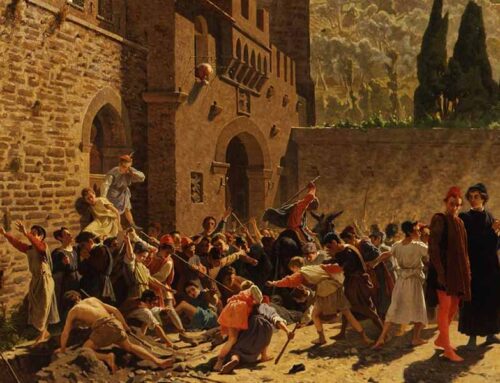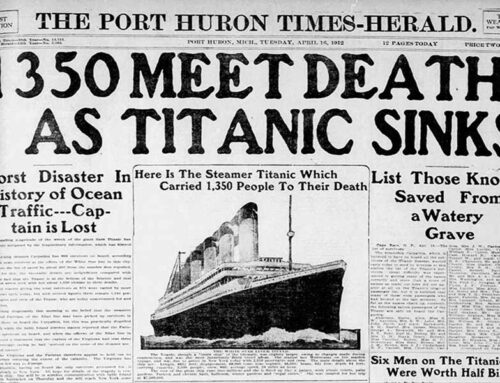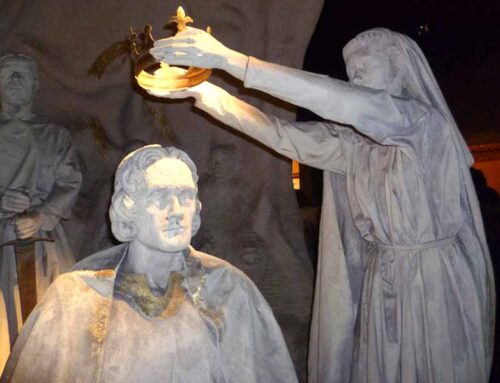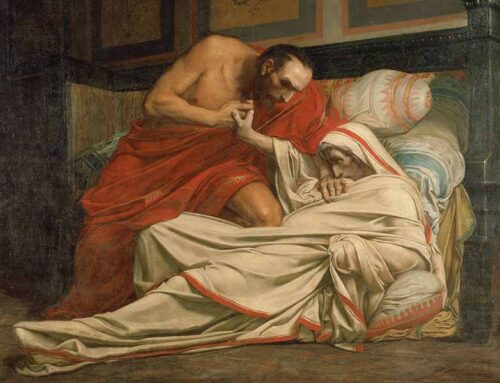
Princess Pocahontas Dies in England,
March 21, 1617
 nce upon a time in Jamestown, Virginia, during the days of King James I when America was yet a wilderness, an Indian Princess was traded for a copper kettle. As is often the case with providence, the clumsy schemes of men in the life of Princess Pocahontas resulted in unforeseen blessing and relief for those who had come to establish our country.
nce upon a time in Jamestown, Virginia, during the days of King James I when America was yet a wilderness, an Indian Princess was traded for a copper kettle. As is often the case with providence, the clumsy schemes of men in the life of Princess Pocahontas resulted in unforeseen blessing and relief for those who had come to establish our country.
Pocahontas was born the daughter of the great Indian King Powhatan, chief of the Tsenacomoco in the tidewater region of Virginia. When she was still a young girl she was the means of sparing the life of Captain John Smith, military leader of the Virginia Company who was sent to settle in her father’s lands. Smith had been captured by her father Powhatan when attempting to make contact with the natives during Jamestown’s infamous first winter of 1607. It was a time when the English gentlemen of the Virginia Company had no time to sow upon arrival and thus starved as a result.
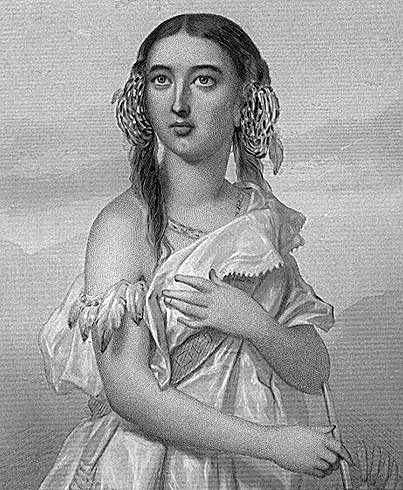
Pocahontas (c. 1596-1617)
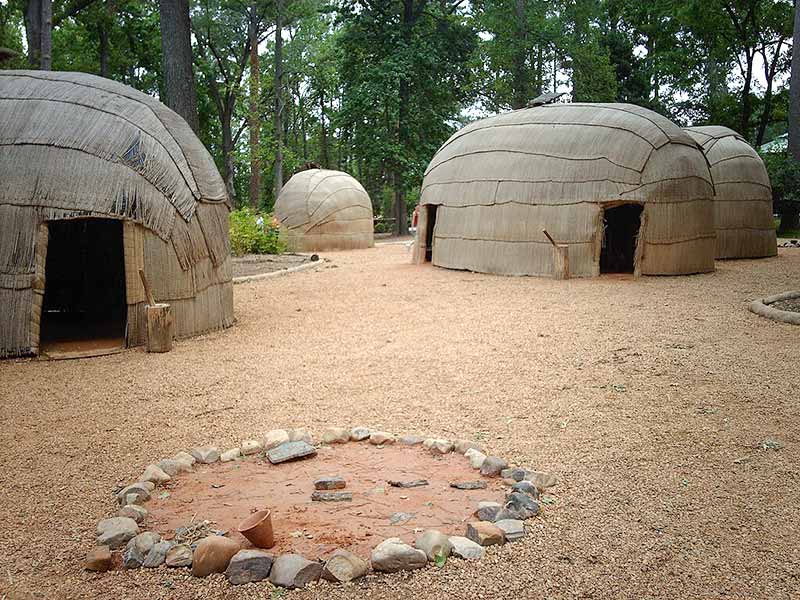
Powhatan Village recreation at the Jamestown Settlement
John Smith himself recounts in third person how he was captured and taken to Powhatan and was asked the white man’s intent. Upon hearing the long and short of it through translators, Powhatan’s council decreed Smith should die. It was then that little Pocahontas, moved with compassion and curiosity for the foreigner, defended Captain Smith:
“Two great stones were brought before Powhatan—then as many as could lay hands on him dragged him to [the stones] and thereon laid his head, and being ready with their clubs, to beat out his brains, Pocahontas, the Chief’s dearest daughter, when no entreaty could pre-vail, got his head in her arms and laid her own upon his to save him from death.”

Pocahontas rescues John Smith, from a 1906 children’s history book on the life of Pocahontas
Smith would survive that day to forge a peace with the Indians, become Powhatan’s adopted son and the Virginia Colony’s greatest governor. With this fledgling prosperity came a constant influx of hopeful new settlers, pouring into Jamestown along with provisions from England, among them an esteemed gentleman by the name of John Rolfe.
Rolfe and his pregnant young wife had been shipwrecked in Bermuda on their way to Virginia. There they lost their child and soon after Mrs. Rolfe died as well, leaving John a widower.
By the time Rolfe arrived in Jamestown, John Smith was gone, returned to England after a gunpowder injury, and Pocahontas, who had so often come to trade with or warn her adopted brother, had not been heard from in over a year. With Smith gone she no longer had reason to visit. And then it was that a certain Captain Argall struck a deal with a neighboring chief, a tricky trade—a copper kettle for the Princess Pocahontas. The deal was made and Pocahontas lured aboard Argall’s ship and taken to Jamestown to be kept as a bargaining chip against her wily father Powhatan—he had taken seven Englishmen prisoner himself, you see.
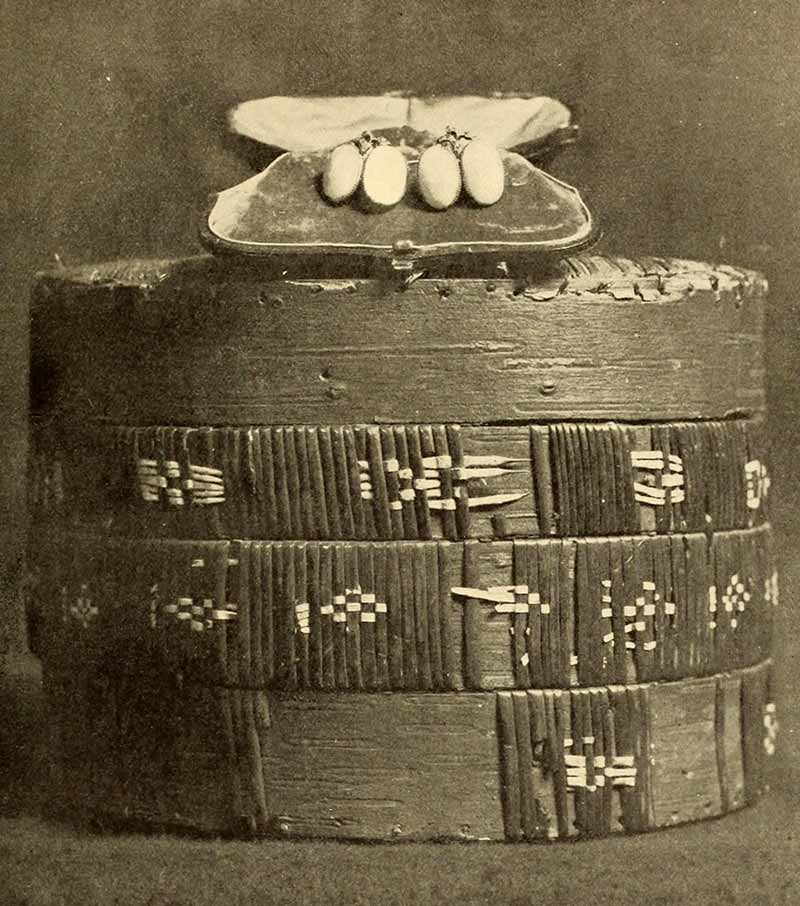
A pair of earrings and a basket, said to have belonged to Pocahontas at the time of her marriage to John Rolfe
Despite enduring this unfair treatment by those who had once been her beneficiaries, Pocahontas recalled the past uprightness of Smith, the goodness of his minister Mr. Hunt and now in her captivity she was delighted by the company of a well-favored widower—John Rolfe.
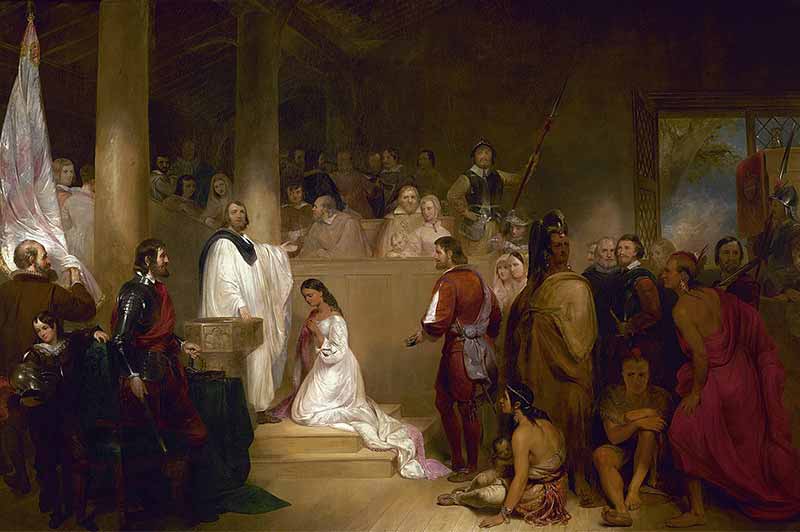
Pocahontas is baptized as Rebecca, with John Rolfe looking on
During her “stay” at Jamestown, Pocahontas came to embrace the gospel of Jesus Christ, requested to be baptized and changed her name to that of the Christian “Rebecca”. John Rolfe then personally went to Powhatan to make amends, and when Pocahontas sent her father a letter regarding her desire to marry the Englishman, Powhatan sent an uncle and several braves to witness the covenant. So it was that in 1614 John Rolfe, entrepreneur of tobacco in Virginia, and the Lady Rebecca, erstwhile Princess of the Tidewater, were married.
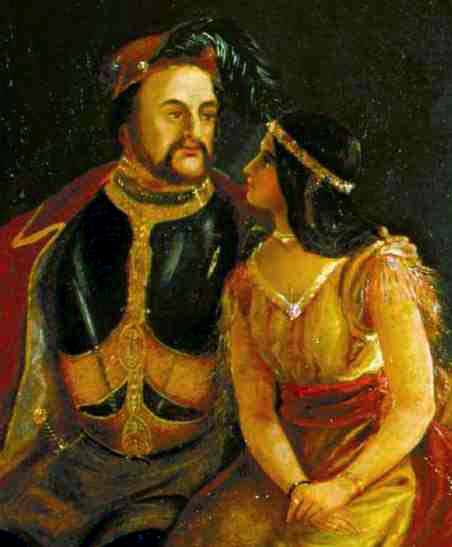
John Rolfe and Pocahontas
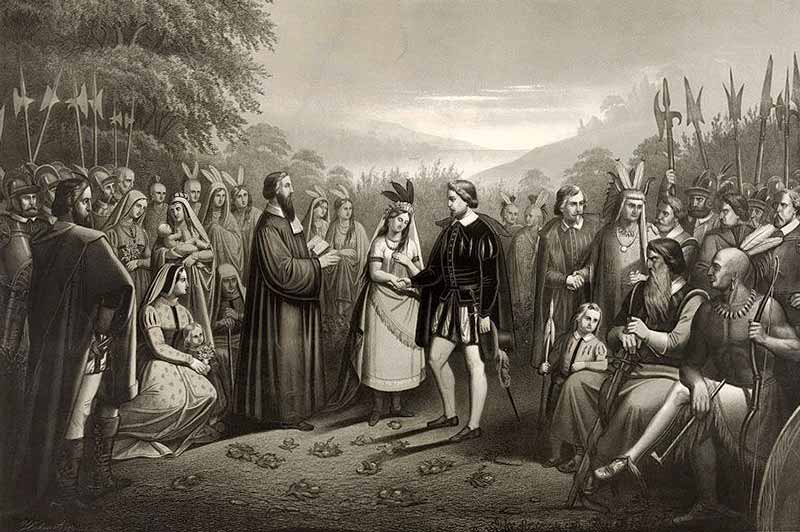
John Rolfe and Pocahontas are married
In 1616 John Rolfe took his pretty young wife to visit his homeland, England, along with their little son Thomas. Their marriage had caused much consternation back home, not for any objection to Pocahontas’ race or creed but rather the opposite—many Englishmen wondered if it were treason for a commoner like Rolfe to have married the daughter of an “Indian emperor”. Respecters of rank as the English were, they set aside a house near Hampton Court for her stay. There she was hosted by the Bishop of London and presented to King James I with great pomp and reverence.
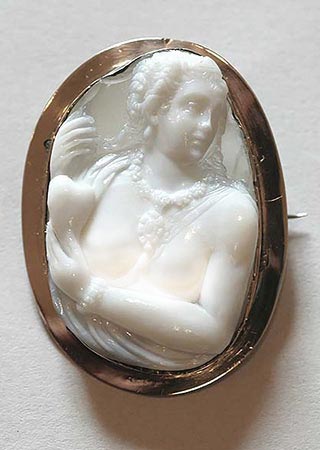
A cameo brooch given to Pocahontas in 1616 by Queen Anne
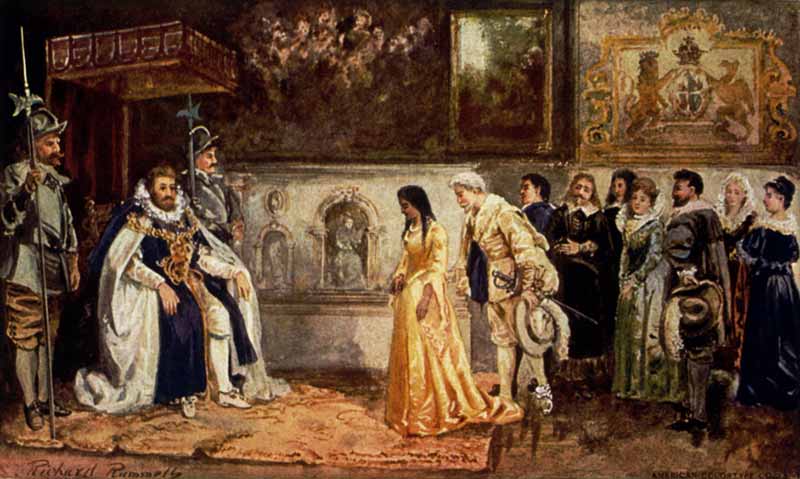
John Rolfe and Pocahontas are presented at King James’ court
Captain John Smith had prepared his monarch to greet her with the respect she deserved, as she had been the means not only of saving Smith’s life twice but that of the colony many times over. Yet Smith himself hesitated to seek her out, unsure if the connection and good will they once shared still remained. But the Lady Rebecca assured him she would never forget those early, forging days when she had been Pocahontas and he a brave foreigner in her father’s lodge.

Captain John Smith (1580-1631)
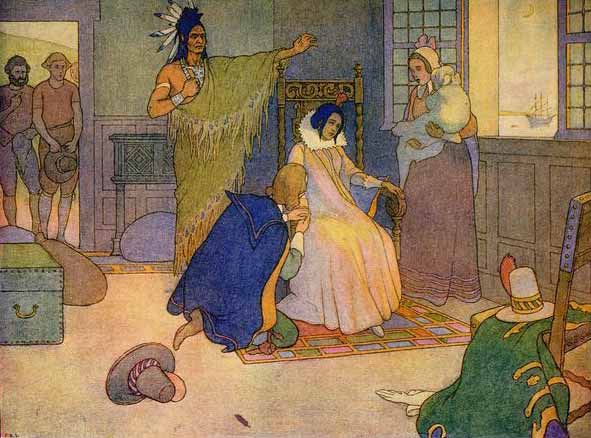
Pocahontas falls ill on the voyage back to Virginia; an anxious John Rolfe sits at her feet, while a nurse stands nearby holding their infant son, Thomas
When it was time for the Rolfes to return to Virginia, Pocahontas was wistful to say goodbye to her old friend and his strange, wet country with its playwrights and cathedrals. As providence would have it, she would never leave England. Their ship had not even left the mouth of the Thames before a sudden illness took her life on this day and weakened that of her child as well. John Rolfe would return to Virginia a widower once more.
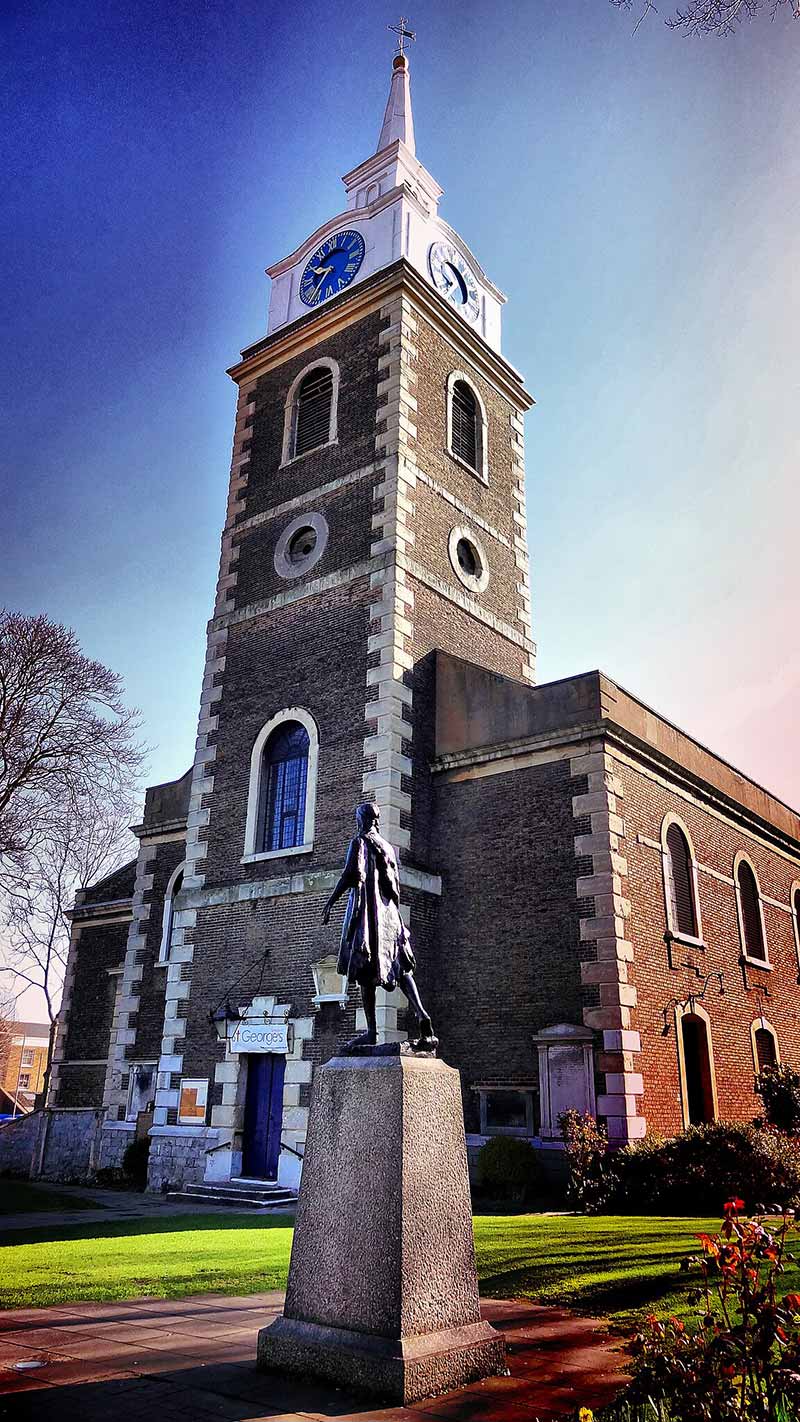
St George’s church, Gravesend, Kent, England, final resting place of Pocahontas, with a memorial statue to her in the foreground
Image Credits: 1 Pocahontas (wikipedia.org) 2 Powhatan Village (wikipedia.org) 3 Pocahontas rescues John Smith (wikipedia.org) 4 Earrings & Basket (wikipedia.org) 5 Baptism (wikipedia.org) 6 Rolfe & Pocahontas (wikipedia.org) 7 Wedding (wikipedia.org) 8 Cameo (wikipedia.org) 9 Presented at Court (wikipedia.org) 10 John Smith (wikipedia.org) 11 Final illness (wikipedia.org) 12 St. George’s Church (wikipedia.org)


